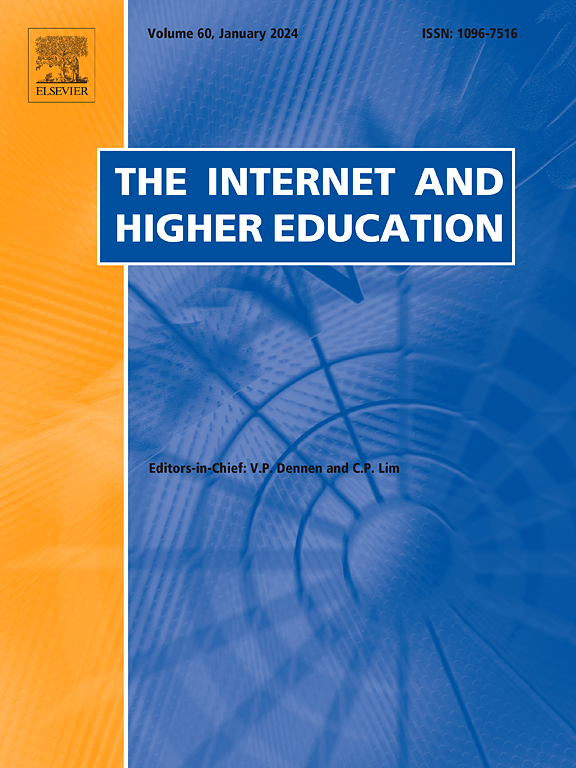Exploring human and AI collaboration in inclusive STEM teacher training: A synergistic approach based on self-determination theory
IF 6.8
1区 教育学
Q1 EDUCATION & EDUCATIONAL RESEARCH
引用次数: 0
Abstract
Inclusive STEM teacher training plays a critical role in shaping the future of STEM teaching practices and improving educational outcomes for all students, particularly those from marginalized and underrepresented backgrounds. This study investigates the inclusive collaborative learning framework for enhancing STEM teaching among student teachers, focusing on interpersonal and human-machine (generative artificial intelligence) collaboration. Employing a Self-Determination Theory guided approach, two rounds of exploratory studies were conducted. Study 1 compared the effects of interpersonal collaboration (TSPL: in-Service Teacher-Student Teacher Pair Learning) and human-machine collaboration (CSPL: ChatGPT-Student Teacher Pair Learning). Building on Study 1, Study 2 employed a hybrid inclusive collaborative learning model (iHMCL: integrated Human-Machine Collaborative Learning) with expanded participant demographics, blended course formats, and integrated peer, expert, and AI feedback mechanisms. The two-year iterative empirical research revealed differences in the impact of the three collaborative learning approaches on student teachers' learning. CSPL and iHMCL groups outperformed TSPL in STEM teaching knowledge and cognitive load, while TSPL and iHMCL excelled in STEM teaching ability compared to CSPL. The SDT-based inclusive collaborative learning framework for STEM teacher training proved effective, with noted implications. In the future, the integration of generative artificial intelligence and cross boundary learning in inclusive STEM teacher education will require educators to redefine their roles, emphasizing emotional support, critical thinking, and creativity, ensuring that AI complements rather than replaces hands-on, reality-based learning.
探索包容性STEM教师培训中人类和人工智能的协作:基于自我决定理论的协同方法
包容性STEM教师培训在塑造STEM教学实践的未来和改善所有学生的教育成果方面发挥着关键作用,特别是那些来自边缘化和代表性不足背景的学生。本研究以人际协作和人机(生成式人工智能)协作为重点,探讨了提高实习教师STEM教学的包容性协作学习框架。采用自我决定理论指导的方法,进行了两轮探索性研究。研究1比较了人际协作(在职师生教师对学习)和人机协作(chatgpt -学生教师对学习)的效果。在研究1的基础上,研究2采用了混合包容性协作学习模型(iHMCL:集成人机协作学习),扩大了参与者的人口统计数据,混合了课程格式,并集成了同伴、专家和人工智能反馈机制。为期两年的迭代实证研究揭示了三种协作学习方式对实习教师学习的影响存在差异。CSPL组和iHMCL组在STEM教学知识和认知负荷方面优于TSPL组,而TSPL组和iHMCL组在STEM教学能力方面优于CSPL组。基于sdt的STEM教师培训包容性协作学习框架被证明是有效的,具有显著的影响。未来,在包容性STEM教师教育中整合生成式人工智能和跨界学习将要求教育工作者重新定义他们的角色,强调情感支持、批判性思维和创造力,确保人工智能补充而不是取代基于现实的实践学习。
本文章由计算机程序翻译,如有差异,请以英文原文为准。
求助全文
约1分钟内获得全文
求助全文
来源期刊

Internet and Higher Education
EDUCATION & EDUCATIONAL RESEARCH-
CiteScore
19.30
自引率
4.70%
发文量
30
审稿时长
40 days
期刊介绍:
The Internet and Higher Education is a quarterly peer-reviewed journal focused on contemporary issues and future trends in online learning, teaching, and administration within post-secondary education. It welcomes contributions from diverse academic disciplines worldwide and provides a platform for theory papers, research studies, critical essays, editorials, reviews, case studies, and social commentary.
 求助内容:
求助内容: 应助结果提醒方式:
应助结果提醒方式:


